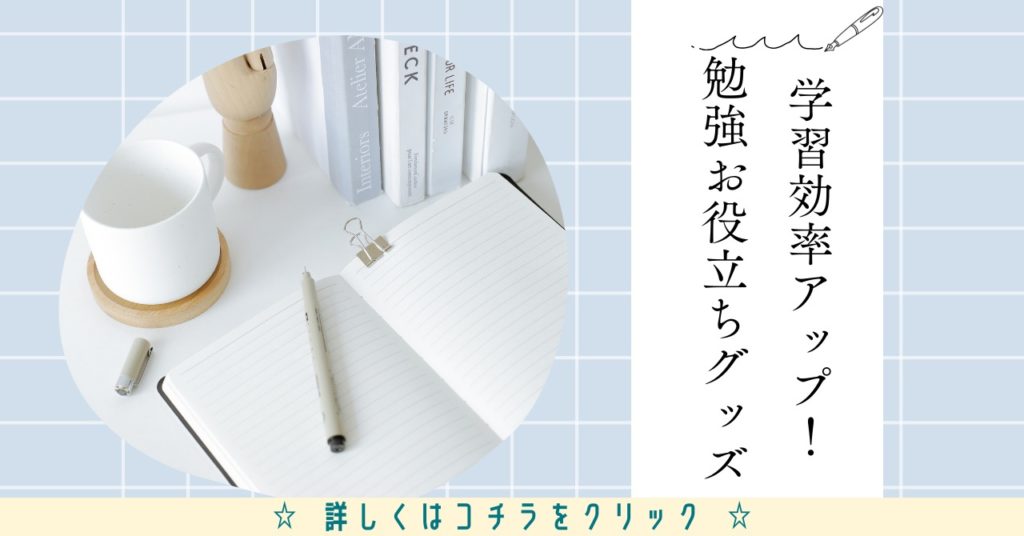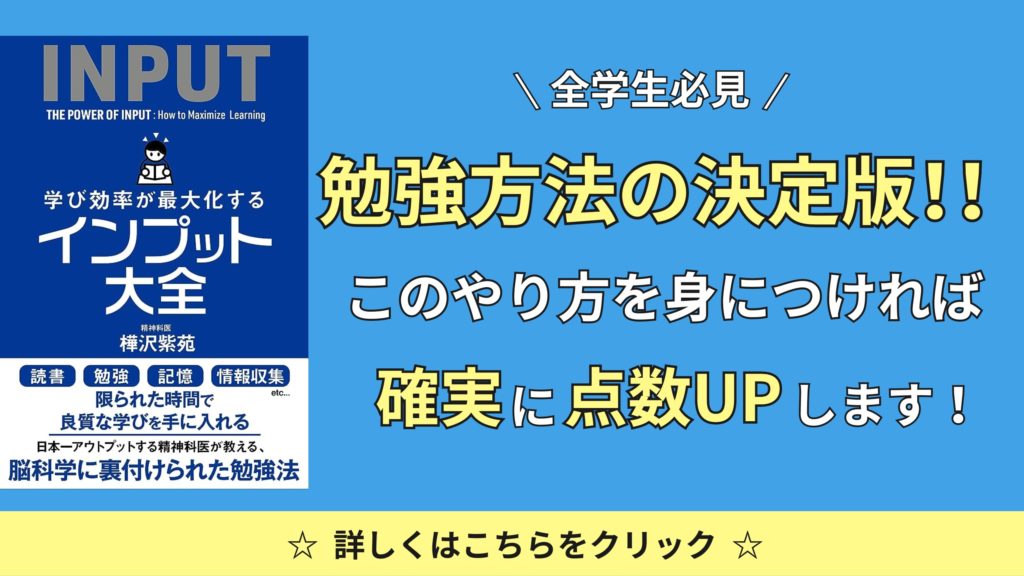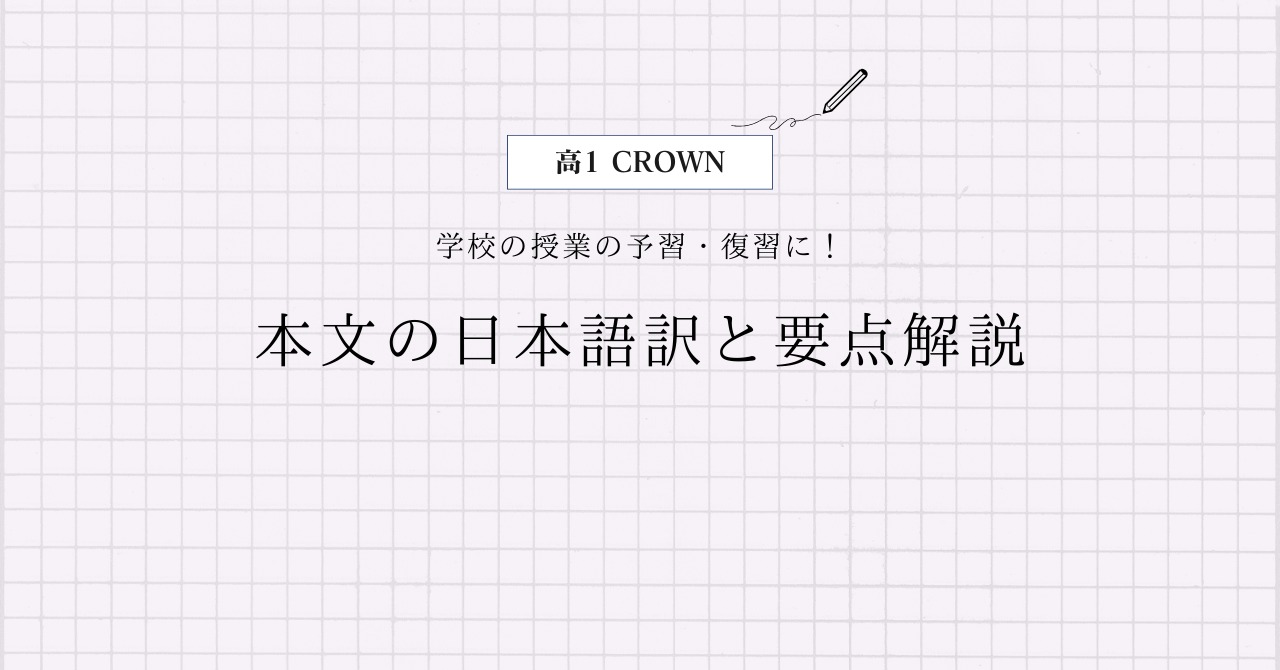三省堂 高1CROWN English Communication1 Lesson4 Section2の本文の日本語訳と重要箇所の解説です。
Section4-1, 4-3, 4-4の解説はこちらからご覧ください。
>高1CROWN English Communication1 Lesson4 Section1 本文和訳
>高1CROWN English Communication1 Lesson4 Section3 本文和訳
>高1CROWN English Communication1 Lesson4 Section4 本文和訳
- CROWN English Communication1 Lesson4 Section2 本文と日本語訳
- CROWN English Communication1 Lesson4 Section2 重要事項の解説
- Since the Jomon people left no written records, researchers have been trying to make a guess about them based on excavations throughout Japan.
- One of the most important excavations began in 1992 at the Sannai-Maruyama site in Aomori.
- Researchers found six huge holes in the ground with the remains of wooden pillars (cf. photo 4).
- They were the base for some large structure (cf. photo 5).
- The researchers also found evidence of another huge wooden structure.
- Probably hundreds of families lived in this village.
- We know that people first arrived there 5,900 years ago.
- Before that, they had been moving from one place to another, but then some of them chose to live there permanently.
- They hunted animals, fished in rivers or in the sea, and picked berries and mushrooms.
- They lived in pit houses and knew how to cook in earthen pots.
- The Jomon people loved to decorate themselves with jewelry made of bone, stone, and shell.
- This village had lasted for 1,000 years before it disappeared, perhaps due to climate change.
- Now, lots of people are coming back to this site, not to live there, of course, but as tourists.
- Now, Takuya will tell us more about dogu.
- CROWN English Communication1 Lesson4 Section2 まとめ
CROWN English Communication1 Lesson4 Section2 本文と日本語訳
2 Life in the Jomon period
「2 縄文時代の生活」
Thank you, Shota.
「ショウタ,ありがとうございます。」
Since the Jomon people left no written records, researchers have been trying to make a guess about them based on excavations throughout Japan.
「縄文人は文書記録を残さなかったので,研究者は日本の至るところの発掘活動をもとに,彼らのことを推測しようとし続けています。」
One of the most important excavations began in 1992 at the Sannai-Maruyama site in Aomori.
「最も重要な発掘の1つは1992年に青森の三内丸山遺跡で始まりました。」
Researchers found six huge holes in the ground with the remains of wooden pillars (cf. photo 4).
「研究者は地面に木の支柱の残りがある6つの巨大な穴を見つけました。(写真4参照)」
They were the base for some large structure (cf. photo 5).
「それらはある大きな建造物の土台でした。(写真5参照)」
The researchers also found evidence of another huge wooden structure.
「研究者は他の巨大な木製の建造物の証拠も見つけました。」
Probably hundreds of families lived in this village.
「おそらく,何百もの家族がこの村に住んでいました。」
We know that people first arrived there 5,900 years ago.
「私たちは,人々が5,900年前に初めてそこに到着したのだと分かります。」
Before that, they had been moving from one place to another, but then some of them chose to live there permanently.
「それ以前は彼らはあちこちを移動し続けていましたが,その後彼らの中にその場所にずっと住むことを選ぶ人もいました。」
They hunted animals, fished in rivers or in the sea, and picked berries and mushrooms.
「彼らは動物や,川,海の魚を狩り,ベリーやキノコを採集しました。」
They lived in pit houses and knew how to cook in earthen pots.
「彼らは竪穴住居に住み,そして土のつぼで料理する方法を知っていました。」
The Jomon people loved to decorate themselves with jewelry made of bone, stone, and shell.
「縄文人は,骨や石,貝殻で作られた宝石で自身を着飾ることが大好きでした。」
This village had lasted for 1,000 years before it disappeared, perhaps due to climate change.
「この村は,おそらく気候変動によって消滅するまで,1,000年間続きました。」
Now, lots of people are coming back to this site, not to live there, of course, but as tourists.
「今では,多くの人が住むためではなく,もちろん観光客としてこの遺跡に戻ってきています。」
Now, Takuya will tell us more about dogu.
「では,タクヤが土偶について詳しく話します。」

CROWN English Communication1 Lesson4 Section2 重要事項の解説
Since the Jomon people left no written records, researchers have been trying to make a guess about them based on excavations throughout Japan.
“since”は“because”と同じ「~だから」という理由を表す接続詞です。
“left”は“leave”の過去形で「を離れる,を残す,~のままにする」という意味ですね。今回は「を残す」です。
“record”は「記録」という名詞で,“written record”で「文書記録」となります。
“researcher”は「研究者,調査員」,“excavation”は「発掘,採掘」という名詞です。
“try to 動詞の原形”は「~しようとする」という重要表現で,“make a guess”は「推測する」となり,さらにここでは「現在完了進行形」になっていますね。
“them”は“the Jomon people”を指していて,“based on~”は「~に基づいて,~をもとに」という重要表現です。
“throughout”は「~の至るところに」という前置詞になります。
One of the most important excavations began in 1992 at the Sannai-Maruyama site in Aomori.
“one of 最上級 複数名詞”は「最も~な名詞の中の1つ」という「比較の応用表現」です。
“began”は“begin(始まる)”の過去形ですね。
“site”は「遺跡,場所」といった名詞です。
Researchers found six huge holes in the ground with the remains of wooden pillars (cf. photo 4).
“found”は“find(を見つける)”の過去形ですね。
“huge”は「巨大な」,“wooden”は「木の,木製の」という形容詞です。
“hole”は「穴」,“ground”は「地面」,“remain”は「残り,遺物,跡」,“pillar”は「柱」という名詞になります。
“with”が使われているので,「木の柱の残りがある穴」という意味ですね。
“of”は前置詞で,”A of B”の形で「BのA」というように後ろから前に訳します。
“cf.”とはラテン語“confer”の略語で,「~を参照してください」「~と比較してください」という意味がありますよ。
They were the base for some large structure (cf. photo 5).
“They”は“six huge holes in the ground with the remains of wooden pillars”を指しています。
“base”は「土台,基盤」,“structure”は「建造物」といった名詞です。
“some”は単数名詞の前に付けると「ある~」という,その名詞の詳細が分からないといったニュアンスになります。
The researchers also found evidence of another huge wooden structure.
“also”は「また,さらに」といった副詞で,付け加える役割があります。色々な文で使うので必ず覚えましょう!
“evidence”は「証拠」という名詞です。日本でもビジネスシーンなどでよく使われますよね。
“another”は“an + other”が一語になったもので,「もう1つの,もう1人の」という意味の形容詞です。“other”が複数を指すのに対し,”another”は単数を指します。
Probably hundreds of families lived in this village.
“probably”は「多分,おそらく」という副詞です。
“hundreds of 複数名詞”で「何百もの名詞」という意味になります。
“village”は「村」という名詞ですね。
We know that people first arrived there 5,900 years ago.
“know”の後ろには「接続詞that」がありますね。
“first”は「初めて」という副詞で,“arrive”は「到着する,着く」という動詞になります。
“there”は“this village”のことです。
Before that, they had been moving from one place to another, but then some of them chose to live there permanently.
“before”は「~前に,以前に」という前置詞で,“that”は直前の文全体を指しています。
“they”と“them”は“people”を指していて,ここでは「過去完了進行形」になっていますね。
“move”は「動く,動かす,引っ越す」という動詞で,“from one place to another”は「あちこちに」といった表現になります。
“then”は「それから,そのとき,それでは」といった意味の副詞です。文に応じて柔軟に訳してあげてください。
“chose”は“choose(を選ぶ)”の過去形で,“to live”は「不定詞の名詞的用法」ですね。
“there”は“this village”のことで,“permanently”は「永久に」という副詞になります。
They hunted animals, fished in rivers or in the sea, and picked berries and mushrooms.
“They”は“people”を指しています。
“hunt”は「を狩る」,“pick”は「を採集する,選ぶ」という動詞で,“berry”は「ベリー」,“mushroom”は「キノコ,マッシュルーム」という名詞になります。
They lived in pit houses and knew how to cook in earthen pots.
“They”は“people”を指しています。
“pit house”は「竪穴住居」,“pot”は「つぼ,鍋」という名詞で,“earthen”は「土の」という形容詞です。
“how to 動詞の原形”は「疑問詞+不定詞」で,「~のしかた,どう~すべきか,~する方法」のどれかで訳してあげればOKです。
The Jomon people loved to decorate themselves with jewelry made of bone, stone, and shell.
“decorate”は「を飾る,装飾する」という動詞で,“decorate A with B”で「AをBで飾る」という意味になります。“to decorate”は「不定詞の名詞的用法」ですね。
“themselves”は「彼ら自身」という再帰代名詞で,主語と目的語が同じになるときは,目的語を再帰代名詞を使って表現します。
“jewelry”は「宝石」,“bone”は「骨」,“stone”は「石」,“shell”は「貝殻」という名詞になります。
“made of~”は「(材料)から作られる」という重要表現で,ここでは「過去分詞」として“jewelry”を修飾しています。
ちなみに“made from~”は「(原料)から作られる」という意味で,作られた物を見て何からできているか分かれば「材料」,分からなければ「原料」となります。
This village had lasted for 1,000 years before it disappeared, perhaps due to climate change.
この文では「過去完了の継続用法」が使われていますね。
“last”は「続く」という動詞で,“for 数字”は「~間」という意味ですね。
“it”は“This village”を指していて,“disappear”は「消える,消滅する」という動詞になります。
「1,000年続いた」→「消滅した」という過去の出来事の時系列を表すために「過去完了」になっています。
“perhaps”は「多分,おそらく」という副詞です。“prpbably”より低い可能性を示します。
“due to 名詞”は「~が原因で,~のせいで」という重要表現です。“climate”は「気候」という名詞で,“climate change”で「気候変動」となります。
Now, lots of people are coming back to this site, not to live there, of course, but as tourists.
“lots of~”は「たくさんの」という形容詞ですね。
ちなみに“lots of”と“a lot of”の違いは,“lots of”の方がよりくだけた表現というだけで,その他の違いはほとんどありませんよ!
“come back to~”は「~に戻る」という意味で,ここでは「現在進行形」になっていますね。
“not to live”は「不定詞の副詞的用法」の否定形で,“there”は“this site”を指しています。
“of course”は「もちろん」,“as”は「~として」という前置詞,“tourist”は「観光客」という名詞になります。
また,“not A but B”という組み合わせで,「AではなくB」という意味になります。よく出てくる表現なので必ず覚えましょう!
Now, Takuya will tell us more about dogu.
“tell 人 もの”で「人にものを話す,教える」となって,“tell もの to 人”でも同じ意味になります。
他には“teach”, “show”, “give”などが同じ使い方をできるので必ず書き換えられるようにしておきましょう。
“more”は「より多くのこと・もの」という名詞ですね。

CROWN English Communication1 Lesson4 Section2 まとめ
以上がCROWN English Communication1 Lesson4 Section2の日本語訳となります。
「過去完了」の使い方をしっかり確認しておきましょう!
>高1CROWN English Communication1 Lesson4 Section1 本文和訳
>高1CROWN English Communication1 Lesson4 Section3 本文和訳
>高1CROWN English Communication1 Lesson4 Section4 本文和訳
何か分からない点や他に解説してほしい点があれば,お気軽にコメントしてください!



コメント